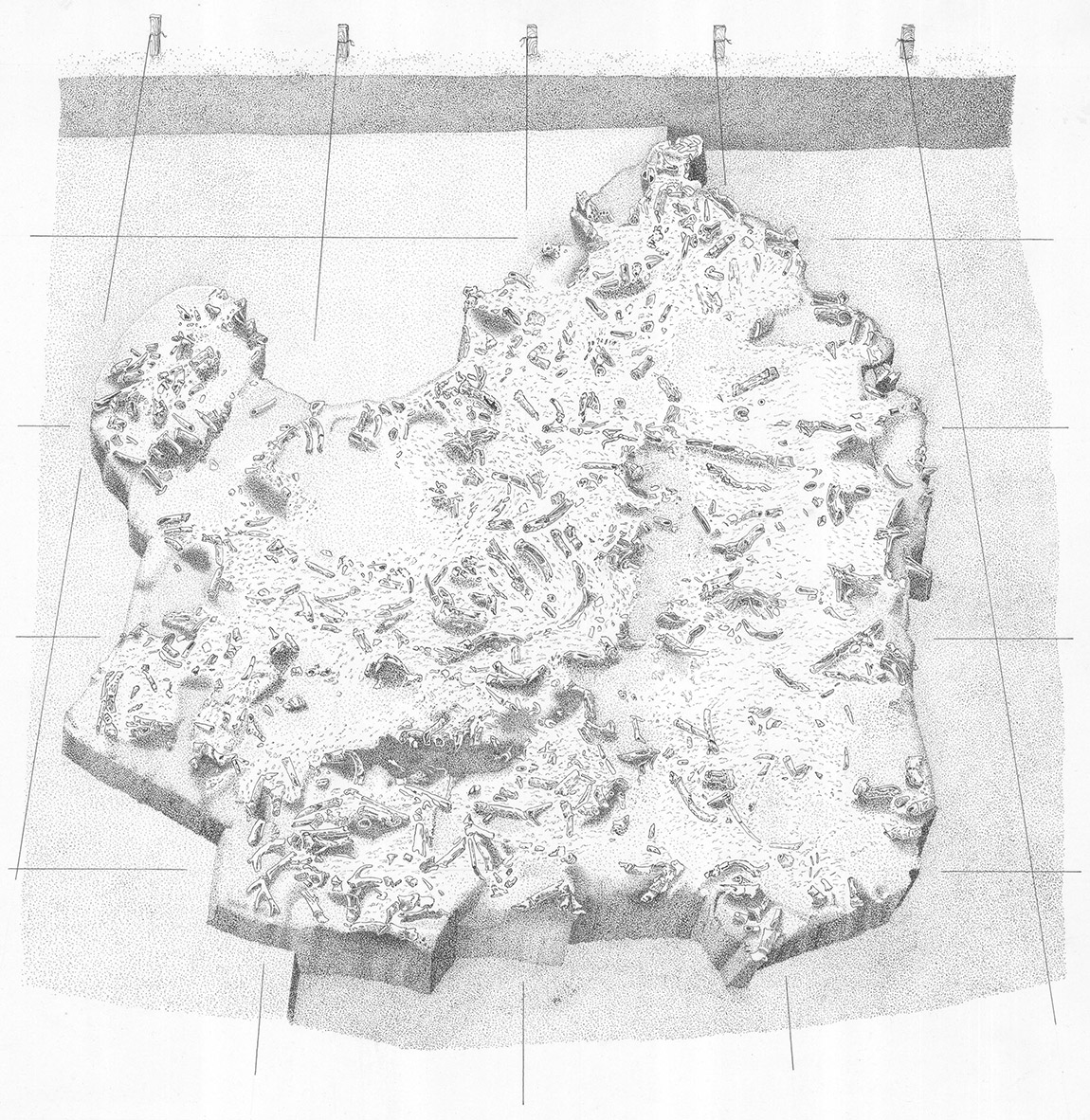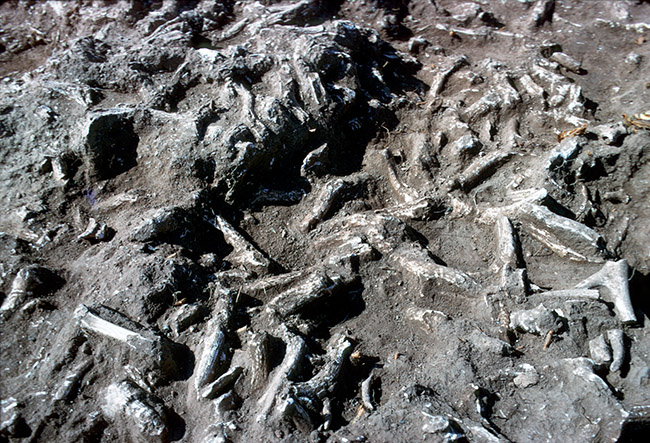
By John R. Samuelsen, Science & Technology Administrator, Arkansas Archeological Survey
Feature of the Month - July 2022
As the Southern Arkansas University (SAU) Station Archaeologist for the Arkansas Archeological Survey, Frank Schambach took care to document important sites in southwest Arkansas in the early years of the Survey. One particularly important multiple-mound Caddo ceremonial center stood out and became a focus of his plans for field excavations. In 1969, he conducted some of the first off-mound excavations at the Crenshaw site (3MI6) that were focused not on finding graves, but on the evidence of Caddo lifeways, such as how they build their houses, lived, and ate (Samuelsen 2009; Schambach 1982). While he found some midden (refuse-related evidence of human activity), the unusual discovery of a ritual structure and a large pile of deer antler quickly became the focus of the excavations. The ash-bed ritual structure is a very important feature, but the antler pile (Feature 1), to my knowledge, represents the largest single deposit of antlers discovered in the southeastern US (perhaps North America).
The antler pile was 4x4 meters and consisted of 2,042 antlers (Schambach 1996). That is equivalent to 1,021 deer. However, deer shed their antlers naturally every winter, so it may be more accurate to state that this is equivalent to 1,021 deer-years if these represented naturally shed antlers. Schambach (1996) speculated that the deposit may have contained twice as many antlers before being disturbed by agricultural activity. Radiocarbon dating places this deposit ca. AD. 1100 (Samuelsen 2014).


So, what does this deposit tell us about the Caddo people who lived at the Crenshaw site? It is clear that deer antlers were being collected by the Caddo at Crenshaw, perhaps being brought in from surrounding areas. Given their physical proximity to the ash-bed structure, the antlers were most likely being used in the rituals taking place in the nearby structure. Interpretations of the rituals in the ash-bed structure are based in part on zooarchaeological analyses of the animal bones collected from the floor (Jackson et al. 2012). There is some thought that the Caddo may have conducted rituals for their dead in the structure. Human skulls may have been kept, displayed, or processed there (Samuelsen 2020; Schambach 1996). Therefore, it is possible that these rituals may have required the repeated use of fresh deer antlers. The large number of antlers associated with this single structure could indicate that there were either significant numbers of dead processed in the nearby structure or that the rituals needed to be repeated for the same set of remains at certain times of the year.
References
Jackson, H. Edwin, Susan L. Scott, and Frank F. Schambach
2012 At the House of the Priest: Faunal Remains from the Crenshaw Site (3MI6), Southwest Arkansas. In The Archaeology of the Caddo, edited by Timothy K. Perttula and Chester P. Walker, pp. 47-85. University of Nebraska Press, Lincoln.
Samuelsen, John R.
2009 Archaeogeophysical Investigations of Early Caddo Settlement Patterning at the Crenshaw Site (3MI6). Master’s thesis, Department of Anthropology. University of Arkansas, Fayetteville.
2014 AMS and Radiocarbon Dating of the Crenshaw Site (3MI6). The Arkansas Archeologist 52:17-35.
2020 An Isotopic Assessment of Late Prehistoric Interregional Warfare in the Southcentral US. Ph.D. Dissertation, Department of Anthropology, University of Arkansas, Fayetteville.
Schambach, Frank F.
1982 An Outline of Fourche Maline Culture in Southwest Arkansas. In Arkansas Archeology in Review, edited by N.J. Trubowitz and M. D. Jeter, pp. 132-197. Arkansas Archeological Survey Research Series 15, Fayetteville.
1996 Mounds, Embankments, and Ceremonialism in the Trans-Mississippi South. In Mounds, Embankments, and Ceremonialism in the Midsouth, edited by Robert C. Mainfort and Richard Walling, pp. 36-43. Arkansas Archeological Survey Research Series No. 46, Fayetteville
Feature of the Month Series
Archeological features are elements or structures that are nonportable or cannot be easily removed from a site (such as a wall or a post hole). Archeologists document archeological features extensively in the field to record what will otherwise be destroyed in the process of excavation. The records of these features are often all that is left at the end of an excavation. Excellent record keeping is necessary for these features to provide insight into the archeological record and site formation.
In this series, we present interesting and important archeological features that have helped archeologists to better or more fully understand the sites on which they were working. New features will be added monthly. Find the list of features here.
